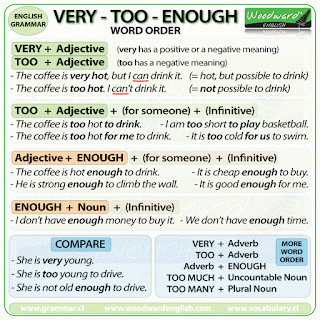PLACING EMPHASIS
Much’ and ‘very’ are two terms that are used often used to imply more or excess. However, the two terms differ in the manner that they are used. ‘Much’ is mainly used as an adjective, while ‘very’ is specifically used as an adverb. An adjective is used to modify nouns and pronouns, e.g. ‘wise’ grandmother, a ‘perfect’ score, a ‘hot’ drink, ‘cold’ water, ‘soft’ cloth, etc. An adverb, on the other hand, is used to modify verbs or clauses, e.g. run ‘fast’, drive ‘slowly’, ‘much more’ electrifying, ‘very’ demanding, etc.
‘Much’ is mainly used with uncountable nouns. Countable nouns and uncountable nouns just specify weather or not the thing that the sentence is referring to can be counted or not. For example: “How much salt is in the dish?” as opposed to “How many spoons to you need?” We cannot count the salt; hence the term ‘much’ is used, while we can most certainly count the number of spoons; hence ‘many’ is used.
Examples:
- How much milk do you want in your tea?
- How much salt is there in this recipe?
- How much money will it cost me?
- As ‘very’ intensifies the strength of a word, sometimes this level of intensity is not good enough, in such cases, ‘very’ can be combined with other adverbs and adjectives to further increase the intensity of the verb. For example: “I was very much happy to help him out.” This implies that I was even more than just very happy to help him out.




Comentarios
Publicar un comentario